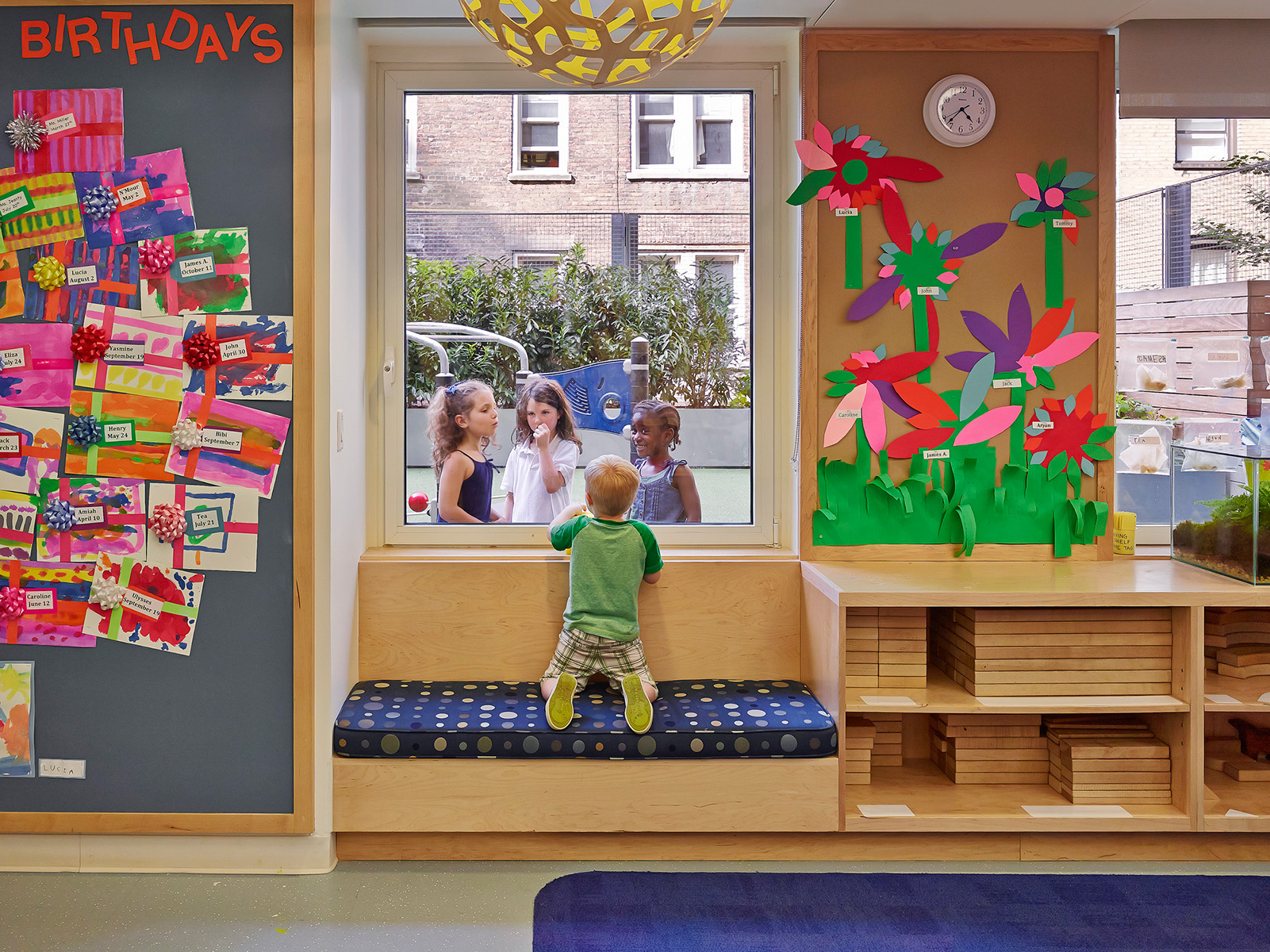Early Childhood Environments
With expertise in designing for a broad range of learning environments, MBB begins the planning and design process by diving into the mission and pedagogy of a school and asking “how do you want to teach?” We then work collaboratively with educators, integrating best practices, innovative solutions and school culture into a design that best supports the school. Appropriate early childhood education environments are critical to laying the groundwork for lifetime achievement. The environments we create engage and support young children as they begin their academic experience by focusing on enriching community, offering engaging and varied experiences and fostering opportunities to make and create.
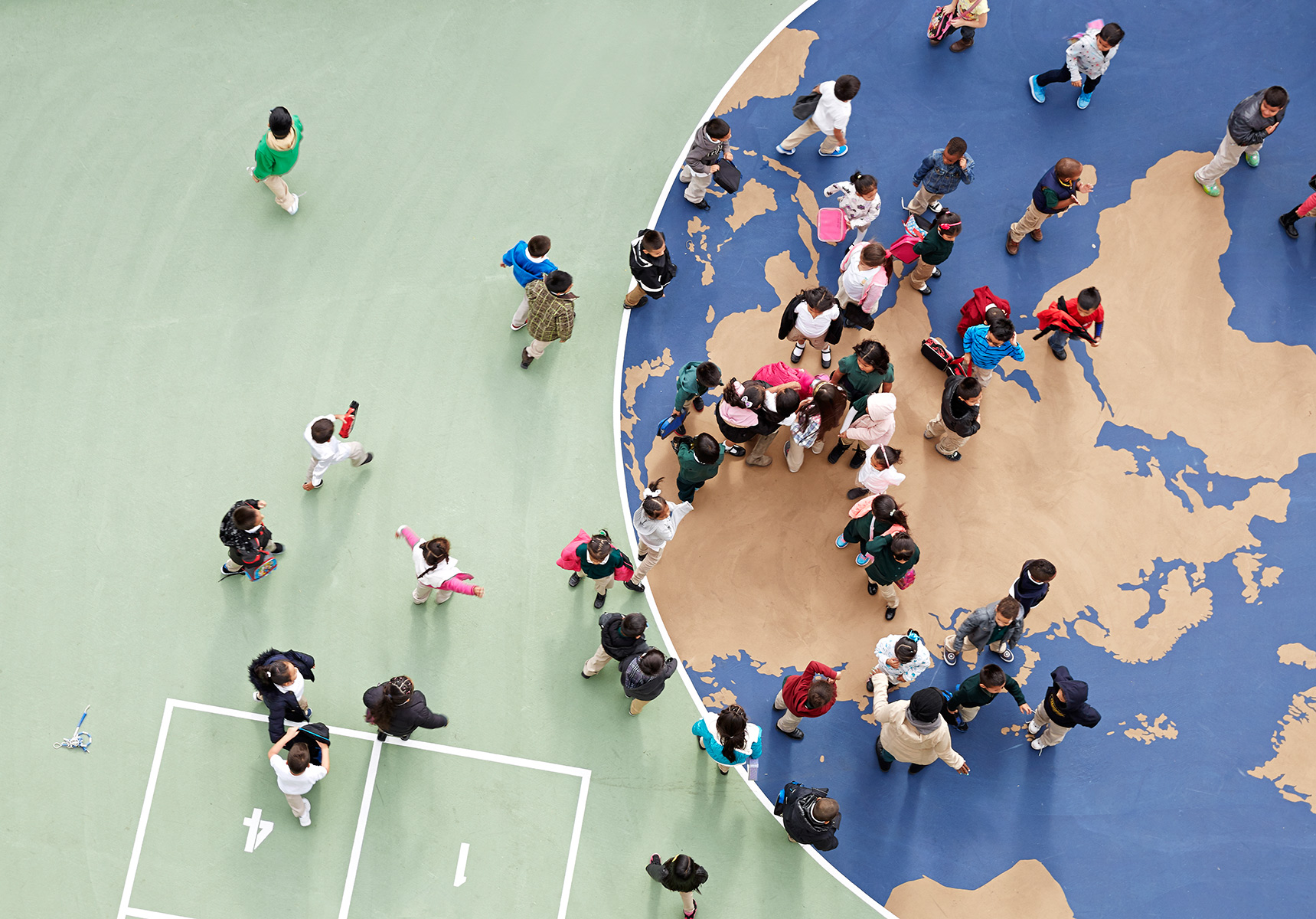
Children learn when they feel safe. Their security, emotional needs for feelings of
comfort and trust have to be satisfied first before they can learn. Safe, clean and
child friendly learning environments that support the developmental level of the
child provide children the sound base they need to engage, interact with the world,
explore, discover and thrive.
– Tovah Klein, Ph.D. Director, Barnard College Center for Toddler Development
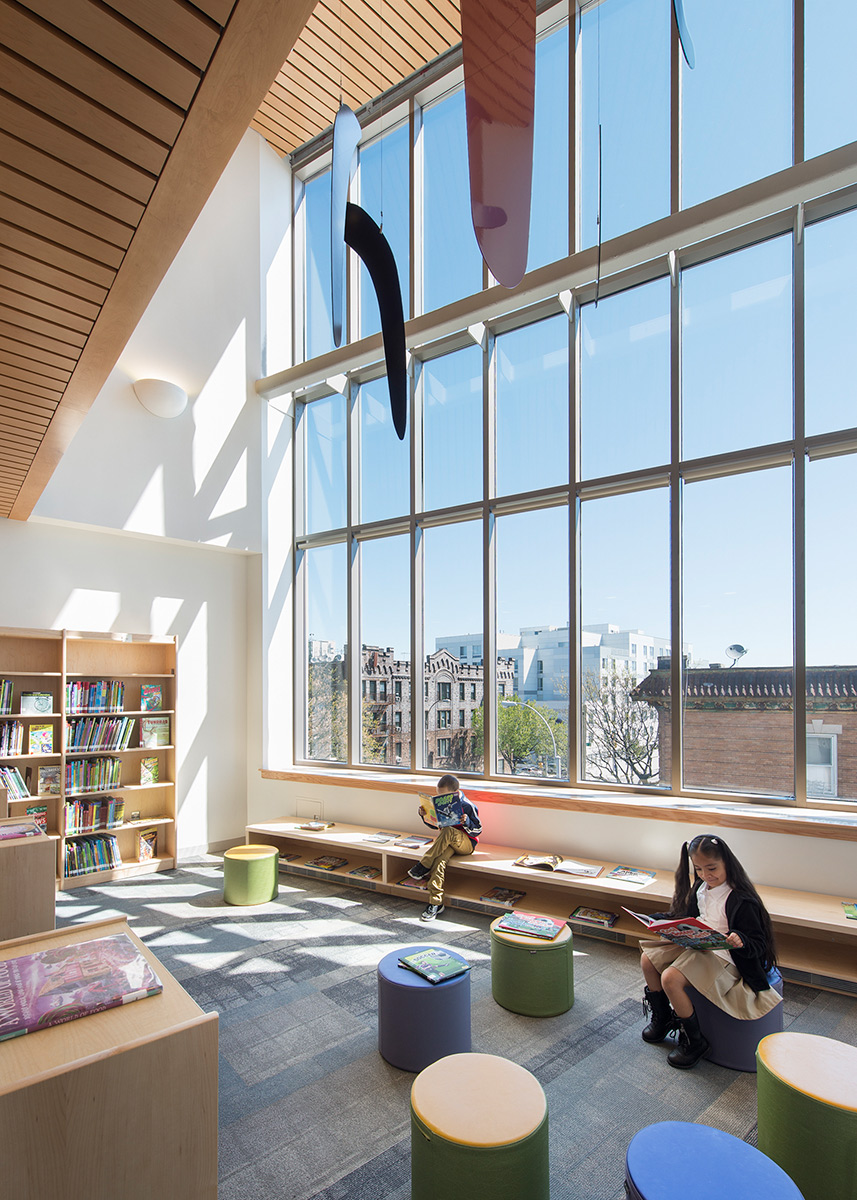
Community
Supporting community starts in the earliest planning phases for a school by organizing activities around gathering spaces that bring people together, as in a town square or piazza. This includes large community gathering spaces as well as smaller more intimate spaces scaled for younger children. We think of circulation spaces as the connective tissue of a school serving as extensions of the classroom and places for informal learning. Transparency can be used to visually connect, orient within and foster an awareness of surrounding spaces and activities. Young children often spend most of their school day in their classroom, and the transition from caregiver to teacher must be carefully choreographed. This can be achieved by carefully considering entries, lobbies and corridors to create a welcoming and safe experience for children, setting the stage for learning to happen.
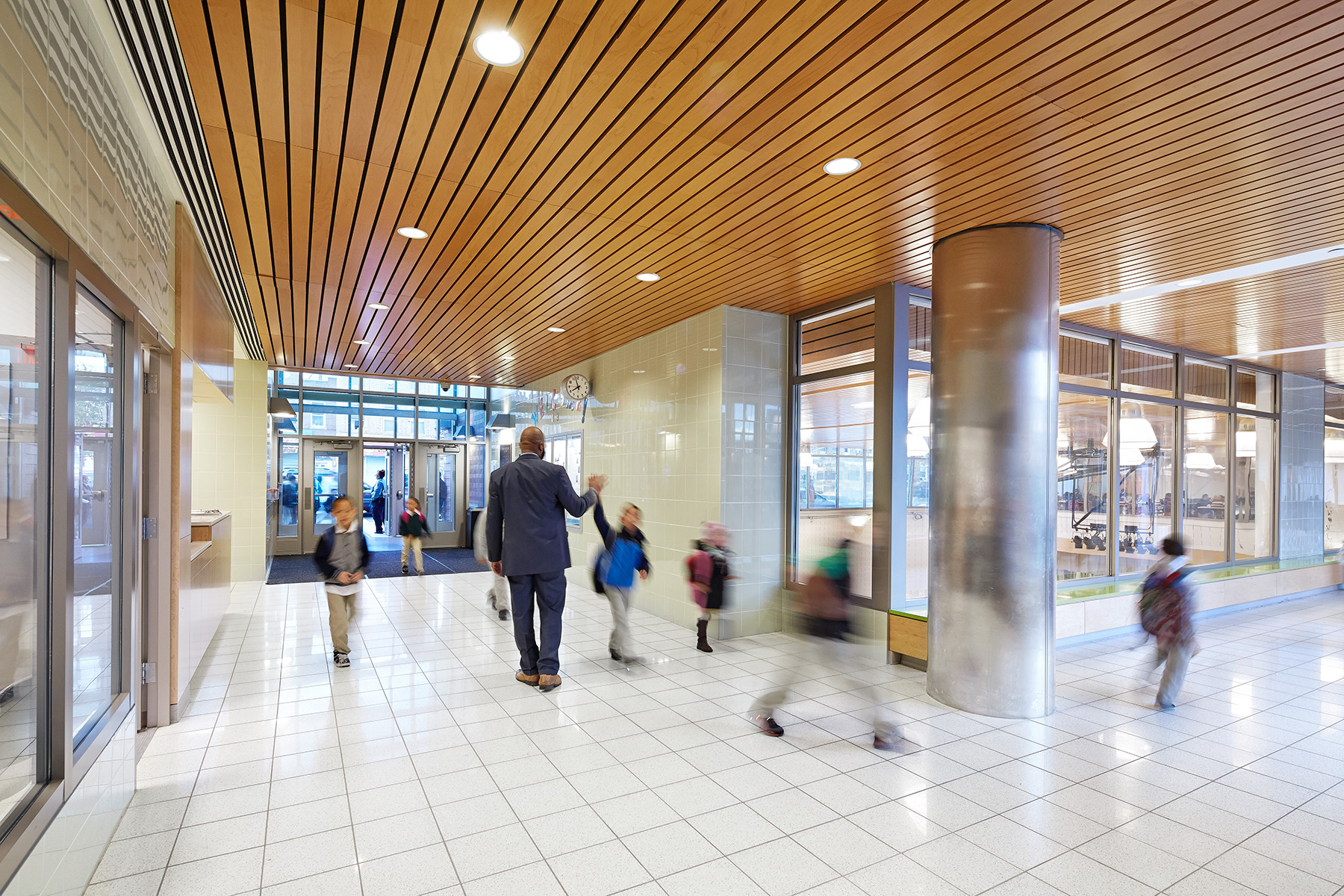
Choice
Varied, interactive spaces afford young children opportunities to engage their environment and their own learning. This includes spaces with varied lighting, materials, flexible furnishings and mixed sizes from large gathering areas to small nooks. Ample and well-organized storage allows for diverse teaching materials without visual clutter, providing children with both choice and focus. Different activity areas within a classroom, adjacent learning areas and outdoor spaces can be organized so children are permitted to freely move between them while still being observed by the teacher. Flexibility also affords choice so that students and teachers can transform the space into multiple configurations.
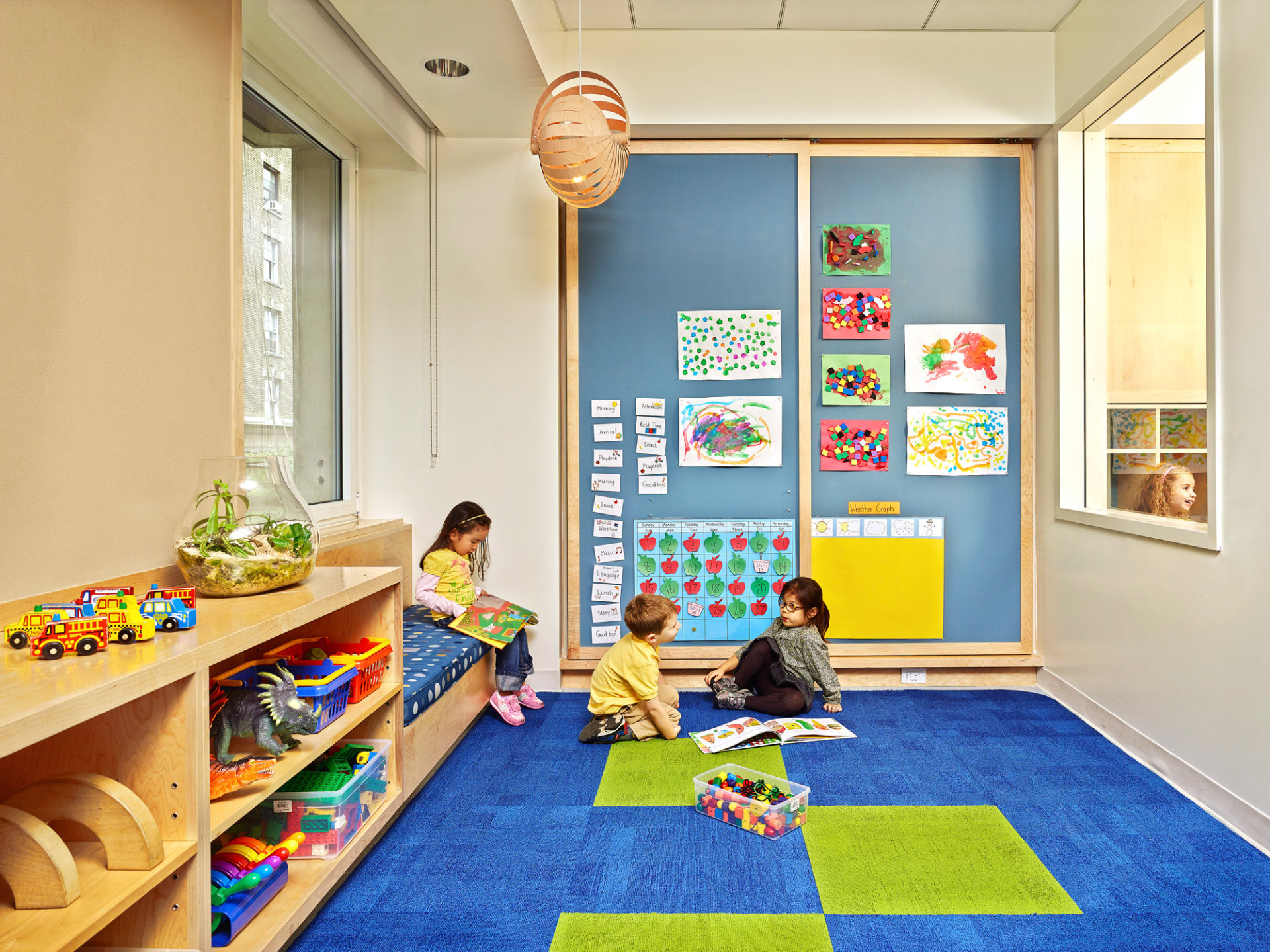
Studio
Spaces for children to learn through making, whether an atelier, art room, woodshop or lab, create opportunities for exploration and self-expression to bolster learning. We design durable, open environments with a variety of materials on hand that children can safely access and use. Studios can be scaled to allow for both individual and group projects with large work surfaces created from generous tabletops, wall space and floors. Young children will take advantage of any surface provided. Ample light and ventilation can be designed with flexible controls. This type of environment can incorporate sufficient infrastructure to allow for the use of a broad range of materials. Digital technologies can also be incorporated if maker, art and craft areas are carefully designed. Simple items like accessible storage and sinks that allow for young children to clean up empower young learners through the process. Incorporating designed and elegant displays of student work can elevate children’s attention to and appreciation of their own work.
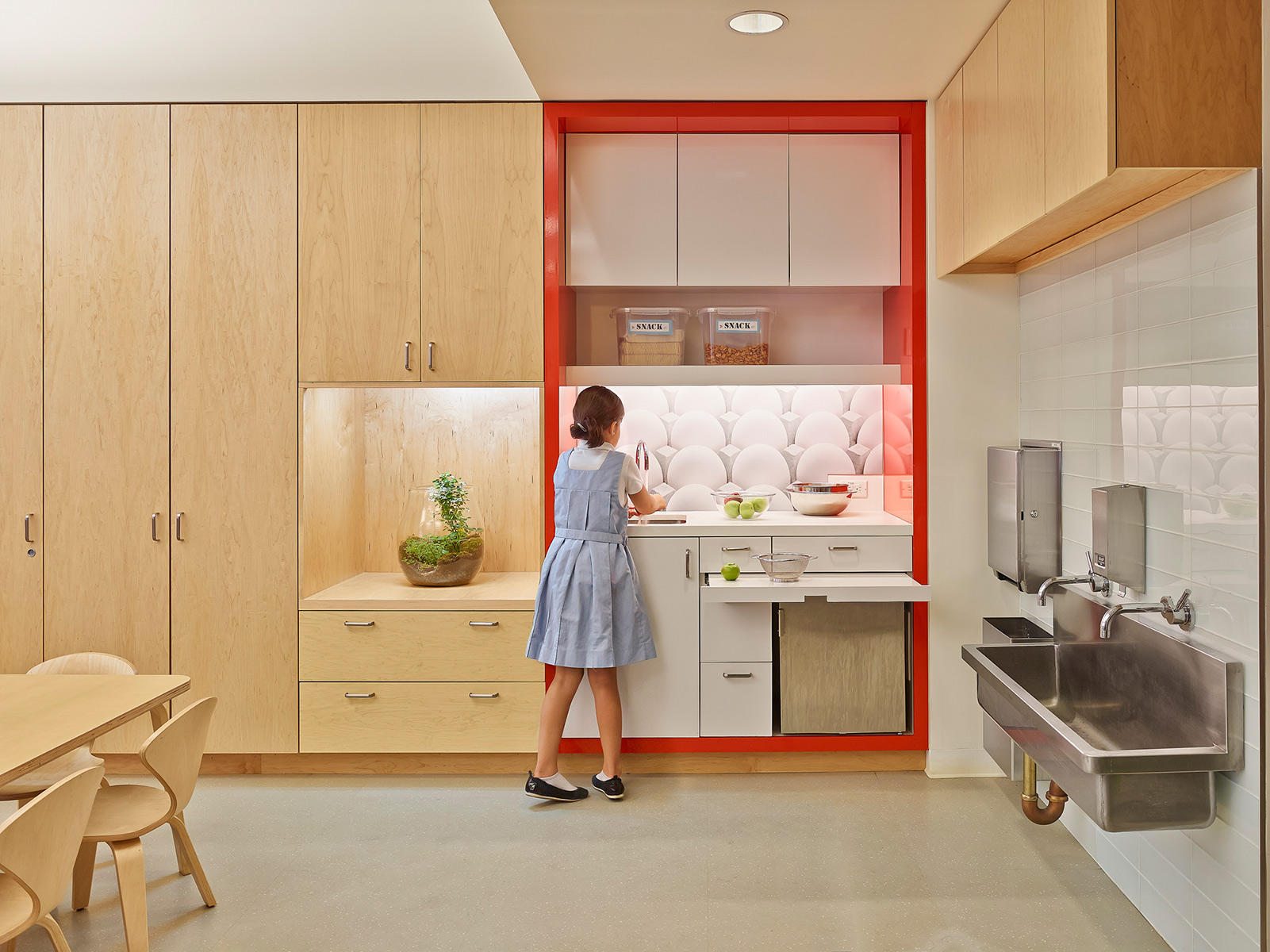
Sensory Rich Learning
Sensory learning requires an environment that is rich and stimulating but also calm and well-organized. This includes incorporating natural light and natural materials with varied tactile qualities throughout the learning environment. Views and access to natural elements such as animals, plants, water and sky enrich and stimulate young minds with subtly changing conditions. Designing for healthy indoor air quality, including creating environments with ample ventilation and free of toxins, increases concentration and improves attendance. Acoustics that provide a quiet environment where speech can be easily heard and understood is critically important to children’s ability to concentrate and learn. This is especially true for young learners who rely heavily on hearing before developing reading skills. Once the design framework for learning is established, a variety of enriching sensory elements like sand and water play, smells of plants and food and opportunities for gardening and cooking can be layered into learning environments.
Through a methodical design process emphasizing strong programming and clear visualization, we work with schools to design enriching environments that address the particular challenges and opportunities of a given place, community and pedagogical approach. Our broad experience and structured process allow us to develop appropriate environments for all learners, including the youngest of children.
